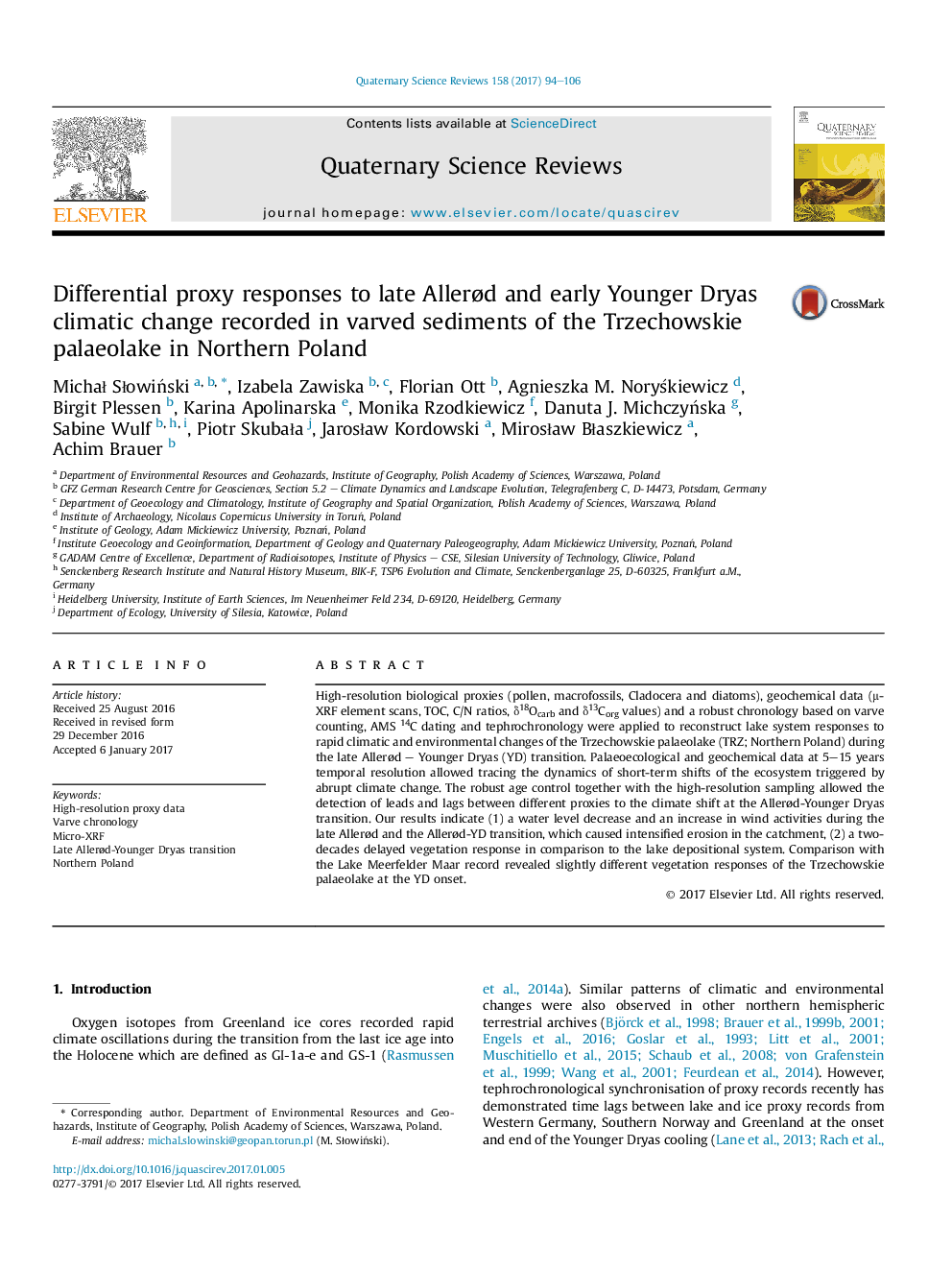| Article ID | Journal | Published Year | Pages | File Type |
|---|---|---|---|---|
| 5786821 | Quaternary Science Reviews | 2017 | 13 Pages |
Abstract
High-resolution biological proxies (pollen, macrofossils, Cladocera and diatoms), geochemical data (μ-XRF element scans, TOC, C/N ratios, δ18Ocarb and δ13Corg values) and a robust chronology based on varve counting, AMS 14C dating and tephrochronology were applied to reconstruct lake system responses to rapid climatic and environmental changes of the Trzechowskie palaeolake (TRZ; Northern Poland) during the late Allerød - Younger Dryas (YD) transition. Palaeoecological and geochemical data at 5-15 years temporal resolution allowed tracing the dynamics of short-term shifts of the ecosystem triggered by abrupt climate change. The robust age control together with the high-resolution sampling allowed the detection of leads and lags between different proxies to the climate shift at the Allerød-Younger Dryas transition. Our results indicate (1) a water level decrease and an increase in wind activities during the late Allerød and the Allerød-YD transition, which caused intensified erosion in the catchment, (2) a two-decades delayed vegetation response in comparison to the lake depositional system. Comparison with the Lake Meerfelder Maar record revealed slightly different vegetation responses of the Trzechowskie palaeolake at the YD onset.
Related Topics
Physical Sciences and Engineering
Earth and Planetary Sciences
Geology
Authors
MichaÅ SÅowiÅski, Izabela Zawiska, Florian Ott, Agnieszka M. NoryÅkiewicz, Birgit Plessen, Karina Apolinarska, Monika Rzodkiewicz, Danuta J. MichczyÅska, Sabine Wulf, Piotr SkubaÅa, JarosÅaw Kordowski, MirosÅaw BÅaszkiewicz, Achim Brauer,
